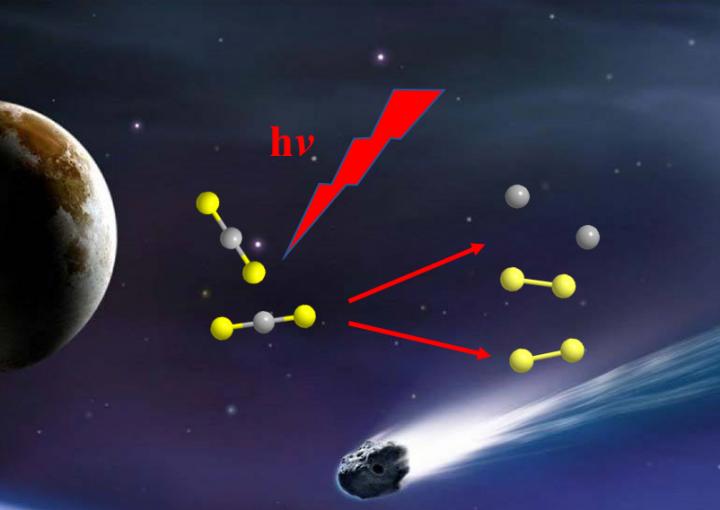
Credit: DICP
Studying the creation and evolution of sulfur-containing compounds in outer space is essential for understanding interstellar chemistry. CS2 is believed to be the most important molecule in comet nuclei, interstellar dust, or ice cores. CS and S2 are the photodissociation fragments of CS2.
Forty years ago, the emission spectra of only CS and S2 species, and not those of CS2 species, were observed from several comets by the International Ultraviolet Explorer satellite. The photodissociation mechanism of CS2 molecules remains unclear, and S2 fragments have not been experimentally observed before.
Recently, a team led by Prof. YUAN Kaijun from the Dalian Institute of Chemical Physics (DICP) of the Chinese Academy of Sciences (CAS), in cooperation with Prof. WANG Xing’an’s group from the University of Science and Technology of China, observed the C+S2 product channel from CS2 photodissociation for the first time using a home-made Time-Sliced Velocity Map Ion Imaging (TS-VMI) experimental setup, based on the Dalian Coherent Light Source (DCLS).
This study, published in The Journal of Physical Chemistry Letters on January 11 2021, provided direct experimental evidence for the origin of the interstellar medium S2 fragments observed previously.
The researchers investigated the two-photon ultraviolet (UV) and one-photon vacuum ultraviolet (VUV) photodissociation dynamics of CS2 molecules via the VUV free-electron laser (FEL) at DCLS. They directly observed the C+S2 product channel from CS2 photodissociation and obtained images of the electronically ground/excited states of S2 products with vibrational excitation.
Moreover, the researchers analyzed the product scattering anisotropy parameter β value. The electronically-excited states of the central atom of the CS2 molecule played an important role in the isomerization and photodissociation processes.
This research demonstrated that interstellar medium S2 fragments could be directly generated from CS2 photodissociation.
“Given the similarity of OCS studied in our previous works and CS2 in this work, we believe that the central-atom elimination channel is more general than expected in the photodissociation of triatomic molecules,” stated Prof YUAN.
###
This work was supported by the Chemical Dynamics Research Center, the National Natural Science Foundation of China, and the Key Technology Team of CAS.
Media Contact
Jean Wang
[email protected]
Original Source
https:/
Related Journal Article
http://dx.




